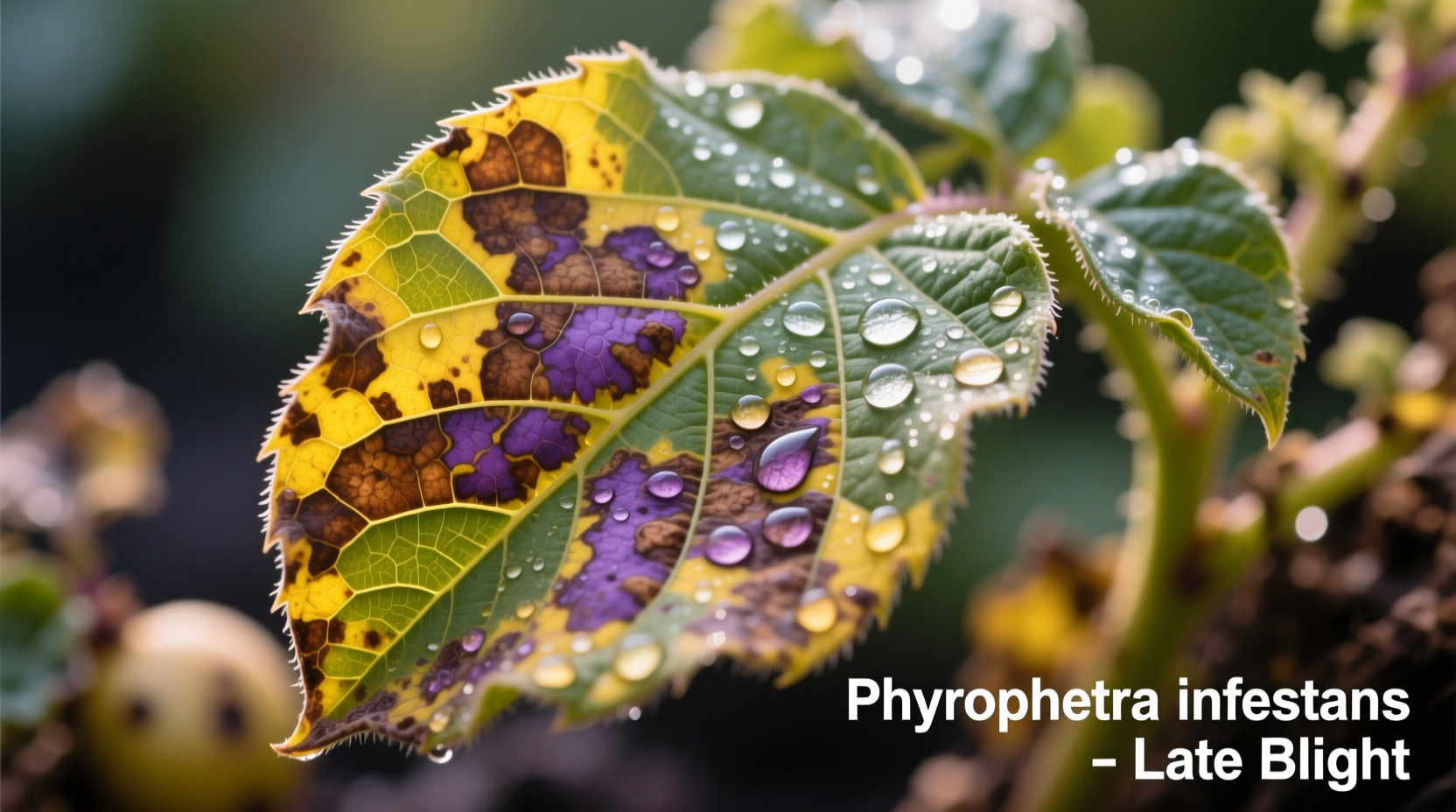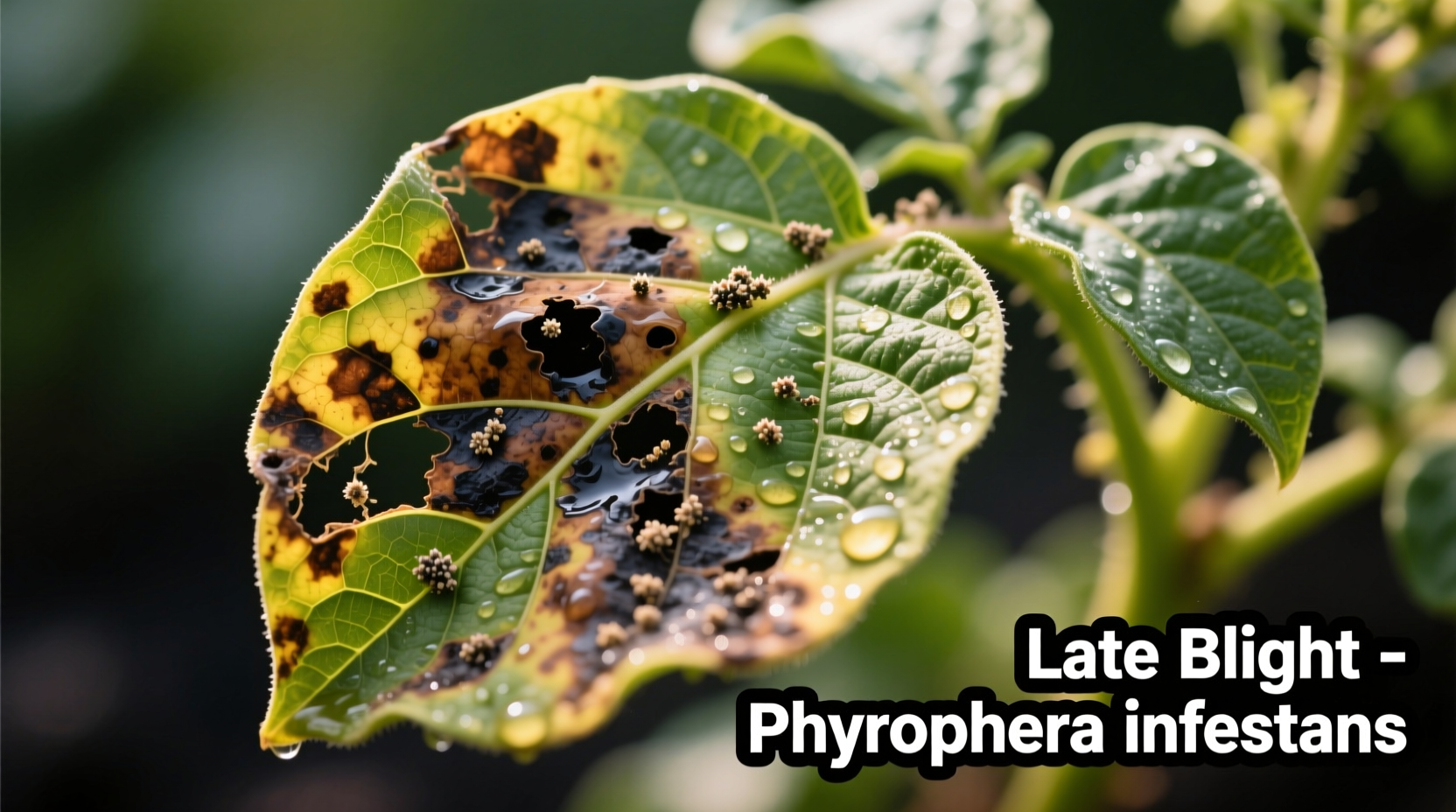Spotting Potato Late Blight Before It’s Too Late
When watery, dark lesions suddenly appear on your potato leaves during cool, humid weather, you're likely facing late blight — agriculture's most destructive potato disease. Unlike early blight's concentric rings, late blight lesions expand rapidly into large, irregular brown spots with distinctive white fuzzy growth on the undersides, especially visible in morning dew. Within days, these spots can engulf entire leaves, turning stems black and causing tubers to develop reddish-brown rot just beneath the skin.
Timing is critical: Phytophthora infestans can destroy a healthy potato field in 7-10 days under ideal conditions of 60°-70°F with high humidity. The pathogen spreads through airborne spores that travel miles on wind currents, making neighbor's infected fields a serious threat. Recognizing these symptoms within the first 48 hours of appearance gives you the best chance to implement effective late blight control on potatoes before total crop loss occurs.

How Late Blight Actually Spreads: The Science Behind Outbreaks
Understanding the pathogen's lifecycle transforms your management approach. Phytophthora infestans isn't a true fungus but a water mold (oomycete) that thrives in moisture. Its spores germinate within hours when leaf surfaces stay wet for 6+ hours at temperatures between 45°-75°F. This explains why outbreaks explode after rainy periods — each lesion can produce 100,000+ spores overnight.
| Condition | Spore Production | Infection Risk Level |
|---|---|---|
| 6 hours leaf wetness, 60°F | High | Critical |
| 4 hours leaf wetness, 70°F | Moderate | High |
| 2 hours leaf wetness, 80°F | Low | Moderate |
| Dry conditions | None | Minimal |
This temperature-moisture relationship, documented by Cornell University's Potato Pathology Program, explains why traditional fungicide schedules often fail — applications must precede wet periods. Monitoring local USABlight risk maps helps time interventions precisely when infection pressure rises.
Proven Prevention Strategies That Actually Work
Prevention beats treatment every time with late blight management. Start with resistant varieties: Elba, Defender, and Mountain Rose offer field resistance that reduces infection rates by 50-70% compared to susceptible varieties like Russet Burbank. The USDA Agricultural Research Service confirms these varieties activate defense genes that slow pathogen development.
Cultural practices form your second defense layer:
- Plant spacing: Maintain 12-15 inch between plants to improve airflow (reduces leaf wetness duration by 30%)
- Irrigation timing: Water early morning so foliage dries before evening
- Field selection: Avoid low-lying areas where cold air and moisture accumulate
- Crop rotation: Minimum 3-year rotation with non-host crops like grains
These methods work best when combined — Michigan State University trials showed integrated approaches reduced late blight incidence by 85% compared to single-tactic systems. However, during extreme weather events (prolonged rain + cool temps), even these measures may require chemical support.
When and How to Treat Active Infections
Once symptoms appear, immediate action is crucial. For organic growers, copper-based fungicides (like Captan) applied at first sign of disease can reduce spread by 40-60%. The Organic Materials Review Institute (OMRI) lists approved products that remain effective without building pathogen resistance.
Conventional growers have more options but must rotate chemistries to prevent resistance. The FRAC (Fungicide Resistance Action Committee) recommends this sequence:
- At first detection: Contact fungicide (chlorothalonil) for immediate burn-down
- 7 days later: Systemic fungicide (mandipropamid) for internal protection
- Maintenance: Alternate between different FRAC codes every 7-10 days
Timing applications before forecasted rain provides 3-5 days of protection. The University of Wisconsin’s Potato Extension emphasizes that preventative sprays work 70% better than curative applications once symptoms appear. Always spray early morning when plants are dry but humidity remains high for optimal coverage.
Long-Term Management: Breaking the Disease Cycle
Effective late blight control requires season-long commitment. After harvest, destroy all cull piles and volunteer plants — these become overwintering sites for P. infestans. The pathogen survives in living tissue but not in soil, making complete plant destruction critical.
Record keeping transforms your management each season:
- Track first detection dates to anticipate future outbreaks
- Note weather patterns preceding infections
- Document variety susceptibility in your specific conditions
These records, maintained through programs like the National Potato Council’s disease tracking system, help refine your prevention strategy annually. Growers using this approach report 30% fewer outbreaks after three seasons of data collection.











 浙公网安备
33010002000092号
浙公网安备
33010002000092号 浙B2-20120091-4
浙B2-20120091-4